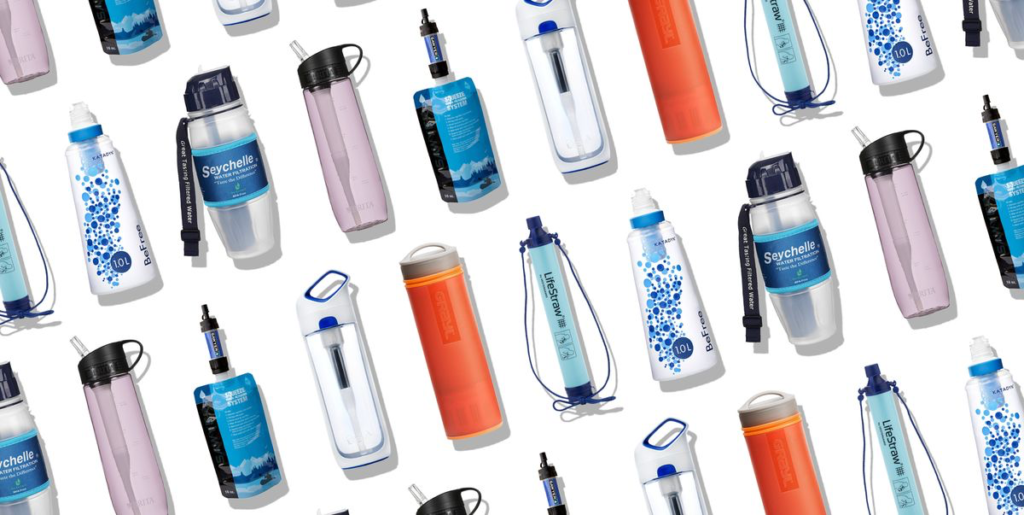Couch to Marathon Training Plan (Tips & Expert Advice)

Transitioning from couch to marathon seems like quite the leap. And in reality, it’s not that simple. However, every marathoner has to start somewhere.
Couch to Marathon Training Plan
In this article, we’ve got 5 tips to ensure your marathon training gets off on the right foot. These are tips for the very beginning of your training.
Tip #1: Find a Couch to Marathon Training Plan
This is the best couch to marathon tip there is: find a training plan. Just heading out for a jog periodically will not miraculously get you across a marathon finish line. Marathons and even half marathons, really any longer distance runs, require careful and intentional preparation.
Find a training plan to break it up and simplify your training. A plan will allow you to build up your mileage gradually so that you don’t burn out or get injured before race day.
A plan will make this goal manageable and real. And find a detailed plan, one that includes a warm up, some easy runs, rest days, stretching – all of the things that may seem intuitive or obvious. Your training plan can’t be too detailed.
And the more details you have ironed out by your plan, the less work you have to do to train. All you have to do is show up every day and follow whatever’s been laid out for you.
Specifically, find an entry-level couch to marathon training plan. Most other plans will assume you’re already doing some regular running—which isn’t the case. You need a training plan that will take you from 0 to 26.2.
Tip #2: Make Your Training Schedule Regular

When you’re just starting out, it can be tremendously helpful to train at the same time of day. Whether your training plan has you doing strength training, a run, or a cross training combination, build a routine and train at the same time of day.
This is helpful for a few reasons. First, varying the time of day at which you train can impede muscle recovery. Your muscles never know how long they have before you’ll be putting them to work again.
Second, consistency will help you stay committed to your marathon goals until you cross that finish line. Long-distance running is not easy, and the likely reality is that no one is making you train.
But if you can build a routine and work your training schedule into the same block of time every day, you are far more likely to stick to the plan and stay accountable.
Treat your training like a calendar appointment.
When fitting in your training, take your daily food plan into account. Consider the amount of time it takes to digest your meals and be sure you’re training when you feel your best. This is especially true on days where your training plan has speed work built-in.
If mornings are the only time you have availability, check out this article on how to become a morning runner.
Tip #3: Make Plans to Stay Motivated
It’s a long way to the finish line of a full marathon. Once you’ve found the training plan that works for you, make a supplementary plan (at least in your head) on how you’re going to stay motivated.
Marathoners don’t always feel excited and ready to train, but there are things you can do to prepare for those days when you just don’t feel like it.
For starters, be sure your training plan has rest days built in. These are going to be crucial. When your plan gives you a rest day, take it.
Next, consider telling others about your training as a way to hold you accountable. If someone else is aware of your weekly mileage, you’ll be more likely to stick to it. We’re not necessarily saying you need a running coach or anything, just consider telling a friend about your hard work.
Sharing a plan with others is always a good way to stay accountable. If this idea really appeals to you, you can even find a group to train with. This can make training feel more enjoyable and social, and again you’ll be far less likely to skip a workout.
If you’d prefer to keep your training separate from your social life, consider joining an online running community to share your progress with. Just share with the group what your training plan has in store for the day, and you’ll be surprised how many people check in to see how went later on.
The point here is that it can often be too easy to break promises to yourself; there are no real repercussions. But if you share your plans with others, the promise becomes not only to yourself but to others, and that’s much harder to break, even on the hard days.
Tip #4: Hydrate

Your training plan should have you marathon ready by race day, but it will only be as effective as you are healthy. Hydration is a huge piece of this.
As a good rule of thumb, aim to consume two liters of water per day on days when you’re not training, and then increase from there given the demands of your marathon training plan.
Also, side note: if your training run is longer than an hour, bring water with you out on the run. Better safe than sorry on that front.
If you can make hydrating a habit, your running experience will be that much smoother. You will be able to reap the full benefits of your training runs without the pains of dehydration (i.e. cramping, fatigue, headaches, etc.).
Tip #5: Get Some Running Gear
While it may seem superficial, the reality is that proper apparel and footwear are going to be crucial for your marathon training. So invest in some good running gear.
Let’s go head to toe here. Starting at the top, if you’re running in the sun, use a hat and/or sunglasses. Even if you don’t think you need it, consider bringing at least one of the two (you’ll thank me later).
And even if you’re not in the sun, hats act as a great sweat absorber, so it may help you keep you cool regardless of weather.
Moving on down, if this is your first marathon, use your training runs to get a sense of what types of clothes you need on your body. Take the weight of your clothing into account as well… no need to add unnecessary weight here.
Try out different shirt options. Even if it’s hot outside, a tank or sports bra might not be the most comfortable option, even though it seems like the coolest. Also, running with sleeves might be useful to prevent sunburn depending on where you are. Trial and error will be your friend here.
Your personal preference should totally guide what’s on your legs. Weather aside, running in shorts isn’t for everyone. Chafing might be an issue, or maybe you need more sweat absorption than shorts provide. The moral of the story here: practice makes perfect. Use your training program runs to figure out which clothes you run most comfortably in.
Lastly, let’s touch on socks and running shoes. For socks, be sure to find a sock that won’t move around. Blisters can sideline you quickly… don’t let them! Find a snug, secure sock that gives you the cushion you need.
As for running shoes, make an informed decision about how much cushion you prefer under your stride. Chances are your local running store can help you with that, or you can check out this video.
In addition, be sure the bottom of the shoe offers enough traction. If you will be training off-road on trails at all, you’ll need some extra traction for stability.
Make Your Couch to Marathon Happen
Don’t just read this article and continue on with your day. Make a plan. Make it happen. You won’t accidentally show up to the starting line of a marathon—you need to take action now to set yourself up for success.
It starts with baby steps. Download a couch to marathon training plan. Study it. Use it. Then, sign up for a marathon and make it happen.
Don’t worry—we’ll be here for you every step of the way.
